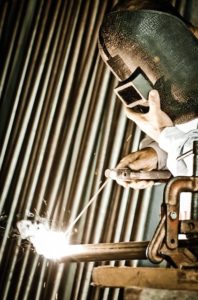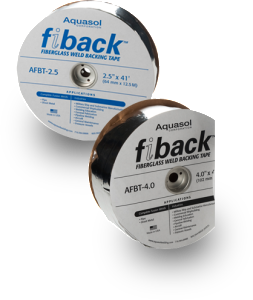
One of the most important and earliest skills that a welder should learn is identifying a good versus a bad weld. A bad weld can have disastrous effects on a project, potential causing a loss of structural integrity or a contamination of product that comes into contact with the bad weld. This is especially true in industries such as food or pharmaceuticals as their facility have some of the strictest quality and safety standards and regulations.
There are several ways that a bad weld can be identified in the case of situations where back purging or some other shielding of the weld’s backside is need. Discoloration of the weld from oxidation is one of the most obvious signs of an improper weld. This will show itself as intense blue and purple hues around the weld. This oxidation will quickly and inevitably lead to rust and a severe loss of integrity.
Another common sign of a poor weld are irregular peaks and troughs on the profile. Ideally, a weld will have a flat, uniform, and consistent profile. Peaks and troughs can indicate over penetration or under penetration of the material, which can both lead to poor fusion.
Aquasol Corporation’s Fiback® Fiberglass Backing Tape aids welders avoid bad welds from oxidation or a poor profile. Fiback® is a weld backing tape made from flexible fiberglass and aluminum. The continuous nature of the tape and its flexibility is ideal for root pass welding of long seams and curved surfaces. The high quality and safe materials used are halogen and chlorofluorocarbon free, and the fiberglass can withstand temperatures up to 1022oF (550oC). In addition, Fiback® will not contaminate the weld, even when the fiberglass strip appears to be burnt.
Traditionally, ceramic tapes have commonly been used for this function; however, ceramic tape has several major weaknesses. Unlike ceramic tapes which develop stress points between pieces, Fiback® is consistent in thickness controlling root penetration and giving enhanced root fusion. Fiback® can help welders control penetration of the weld, which will give the weld a good profile. A good profile is indicated by a flat and uniform weld structure, while a bad profile has irregular peaks and troughs. Additionally, Fiback®’s flexible nature is what makes it so appealing for these applications and provides an advantage over other types of backing tape, such as ceramic.

Ceramic backing tape is too rigid to be used in applications such as piping and tank fabrication, unlike Fiback® which can conform to a number of surfaces and shapes. Ceramic tape also fails to accommodate the HiLo alignment, the step when plates are misaligned, whereas Fiback® takes up the shape. Furthermore, the proper shape and size of ceramic backing must be determined to obtain the desired results as well as be properly placed on the joint.
Fiback®’s reduction of back purging and control of weld penetration minimizes the need of post weld dressing and grinding. Weld clean up can add a significant amount of time and labor expenses to a job. Fiback® allows operators to be more efficient and effective, in addition to the gas savings.
Fiback® can be used on both carbon and stainless steels and is compatible with TIG and MIG welding. It can be used in a vertical or horizontal orientation. It is ideal for plate, sheet, and pipe welding, and some of Fiback®’s most popular applications include pressure vessels, large bore pipes, tanks and shipbuilding.
Fiback® is available in two varieties, light and heavy duty, as well as two different sizes, 2.5” and 4”, to fit the needs of any job. Contact Aquasol Corporation to get a free sample, and see how Fiback® can help you increase efficiency, save money, and avoid a bad weld.
Further reading: Uses and Advantages of Fiberglass Weld Backing Tape
© 2025 Aquasol Corporation. All Right Reserved.
